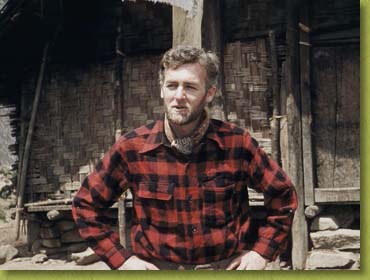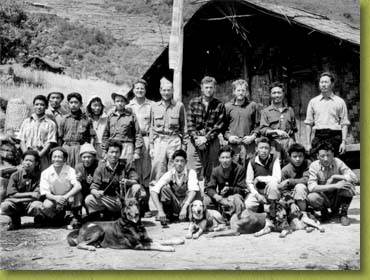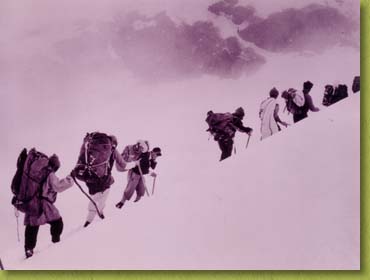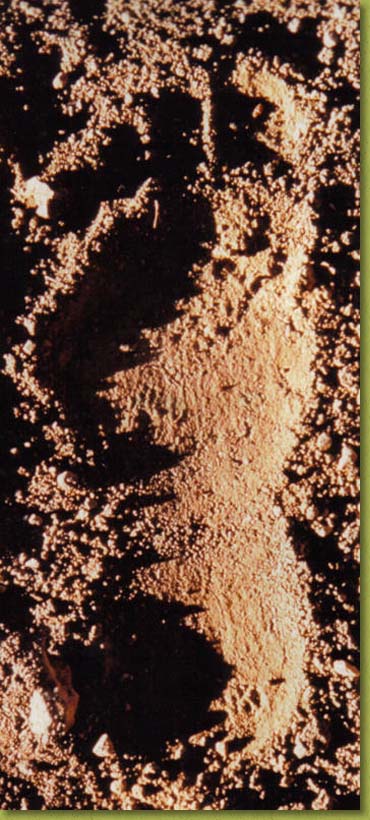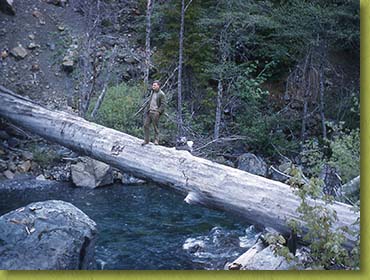 |
 |
|
 |
|
 |
|
 |
|
 |
|
 |
|
 |
|
 |
 |
||||||||||||||||||||||||||||||||||
|
Beginning when he was a child and his father used to tell him bedtime stories about the Yeti, or Abominable Snowmen of the Himalaya, Peter Byrne has always had an interest in the unknown and the mysterious. This has carried through his life and, beginning with the lure of the mysterious Yeti, has taken him from the high Himalaya and its enigmatic ape men to the rugged forests of the Pacific Northwest of the U.S., and the equally great mystery of another unknown primate - the giant creature known as the Bigfoot, or Sasquatch. To this end he has spent a total of thirty-eight months in the Himalaya - longer than any foreigner - spread across five expeditions and, in a tenacious effort to solve the Sasquatch phenomenon, designed and led three major Pacific Northwest research projects.
His first opportunity to go looking for the Yeti occurred in 1946, while he was still in the British Royal Air Force in Bombay, India. After four years of combat service in the islands of the Indian Ocean, he was waiting to get a berth on a ship to go home. With the war ended and plenty of time to spare, he and a fellow airman, Peter Saunders of Norfolk, set off on a private Yeti research project to the little Himalayan cantonment of Darjeeling, in North India, and there spent time talking with Sherpa and Nepalese men and women about the phenomenon. When Saunders had to leave early, Peter took a small, three man, two week expedition into the middle Himalaya. This was his first taste of the beauty and challenge of the highest mountains on earth and the mystery they concealed ... of an upright walking primate, still unknown to science. He vowed to go back. Leaving the RAF in 1947, Peter joined a British tea company in North India, near Darjeeling, and during his five years of service in the tea estates he took two, one-month Yeti expeditions into the Sikkim Himalaya. On the second of these he met an old friend, the great Everest climber, Tenzing Norgay of Darjeeling, who told him about an American Yeti expedition that was being planned for the Nepal Himalaya. Making contact with the people involved - a Texas group financed by a man named Tom Slick - Peter designed and led, in 1957 and through 1959, three high mountain searches for the elusive snowmen. His principal finds during this period consisted of two sets of Yeti footprints - one found by him and the other by Slick - and later, in a temple at the village of Pangboche, high in the Sola Khumbu region, the paradoxical Yeti scalp and the mysterious Yeti hand, part of the latter of which, with the aid of the renowned Jimmy Stewart and his wife, Gloria, he was able to get to England for examination. After three years in the Himalaya, during which Peter and his men hiked across thousands of miles of rugged, high altitude territory, living on hard tack and sleeping in caves in sub-zero weather, Slick temporarily closed down the expeditions. He cabled Peter to take a week's break in Katmandu and then come to the U.S., to investigate a creature similar to the Yeti that purportedly lived in the vast forests of the Pacific Northwest. At first skeptical about the U.S. phenomenon, Peter flew to Texas and sat down with Slick to pour over maps of northern California, Oregon, Washington and British Columbia and planned a project. Studying the maps, the first thing that he noticed - something that soon began to erode his skepticism - was the enormous size of the heavily-forested mountains of North-Western America and British Colombia, a vast region running from Northern California to the Alaskan border - an area that was five the times the size of the mountains where he had just spent three years. More to the point, and unlike the Yeti, the Pacific Northwest creatures, whatever they were, had a documented history that went back - via old newspapers and magazine articles, letters written by missionaries and miners, and Native American lore - for more than 300 years. Again unlike the sparse evidence of the Yeti, there were, Slick told him, recent footprint finds and sightings; the footprints had been documented with plaster casting and the sightings were reported by reliable eye witnesses. Acting under Slick's directions, Peter flew to the Pacific Northwest and set up a base in in what at that time appeared to be the heart of activity of the phenomenon, Trinity County, in Northern California. There, at a tiny settlement named Salyer, near the town of Willow Creek, he assembled equipment that included four-wheel-drive vehicles, all terrain, heavy-duty motorcycles, cameras and binoculars and all-weather camping gear. He set up an office with staff and recruited an outdoor team of men and women with backgrounds of experience in the heavily forested terrain of the mountains. Once ready, he set about what he named The Great Search, for something which, if eyewitnesses were accurate in their descriptions, was a giant, unclassified, hair-covered, bipedal, man-like primate that might well have as its ancestor an equally enormous primate that at one time lived in Asia - in fact in the region from which America's Native Americans originated - a huge beast known to scientists as Gigantopithecus. Commencing in early 1960, Peter's search continued for two and a half years, until October, 1962 at which time, in a most unfortunate accident, his friend and the project sponsor, Tom Slick, died in the crash of small plane. Tom's family then closed down the project and Peter left the U.S. and returned to Nepal, where he resumed his interrupted big game hunting career. It was many years before he returned to the Great Search in 1994 with another professional, full-time, fully-funded project. In 1994 Peter took a man named David Ransburg, from Peoria, Illinois, with his son and his cousin, Peter's friend, Susan Ransburg, on an Eco-Safari in the Terai jungles of far South-West Nepal. Sitting around the campfire at night, with the dark blue line of the Himalaya gleaming against a star-lit sky, the conversation naturally turned to the Yeti and then, as a matter of course, to the Bigfoot mystery. Peter told Ransburg that the Yeti might be gone; there had been no sightings and no footprint finds for many years. But he added that he considered the Bigfoot mystery not just a great challenge but one which, especially with the use of high tech equipment, posed the possibility of an extraordinary scientific find. Soon after the group returned to the U.S., Ransburg contacted Peter and asked him if he would be interested in designing and operating a new project and a new search for the mysterious Bigfoot; if so, he would sponsor it. Peter promptly said yes and so was born another search, Bigfoot Research Project 111, one that lasted for five years and that, although one of the creatures was not found and documented, convinced Peter of the high probability of a small group of the mysterious primates living and surviving in the Pacific Northwest; and that further research was warranted. Today, from his home on the Oregon coast, Peter continues The Great Search. His work to date has yielded finds of several sets of giant footprints, more than a hundred credible eyewitness reports and, in a remote area - twenty miles up a rugged ravine in the Six Rivers National Forest in Northern California - a giant, nine foot by four foot bed of moss which one of the creatures almost certainly constructed, and in which it slept. Now, in 2011, his research continues and is designed on Geo Time Patterns - patterns with a foundation based on the location and time of credible sightings and, to some extent, by footprint finds. His equipment once again consists of four-wheel-drive vehicles but now with motion sensor cameras and night vision devices; his team is a small, close-knit group of persons, some of whom have had personal sightings of one of the giant primates. His aim is to document the existence of the creatures with solid evidence and knowing what science will demand - this evidence would be in the form of DNA extraction from physical remains. Scientists will accept absolutely nothing less as evidence of the existence of a being which, living undiscovered and unclassified in the most sophisticated and advanced country in the world, is presently close to being scientifically unacceptable. For Peter, that is understood. But in his case - one that he would be quite happy about at this period of his life - a personal encounter would be enough. One that would enable him to shoot some photographic documentation, one that would give him certification which he knows the scientific community will not accept but which, after a lifetime of searching, he knows his friends and fellow Bigfoot hunters will ... from someone with a reputation in the field of not just years of tenacious and dedicated research, but also of impeccable integrity. Until then, he plans to continue with The Great Search. |
|
|||||||||||||||||||||||||||||||||
|
Website Designed and Hosted by D INTERNET Solutions |
||||||||||||||||||||||||||||||||||
